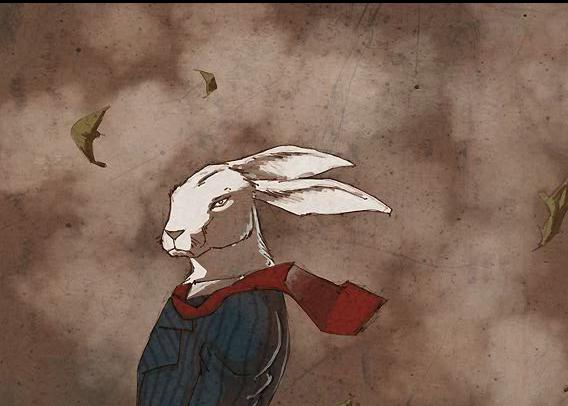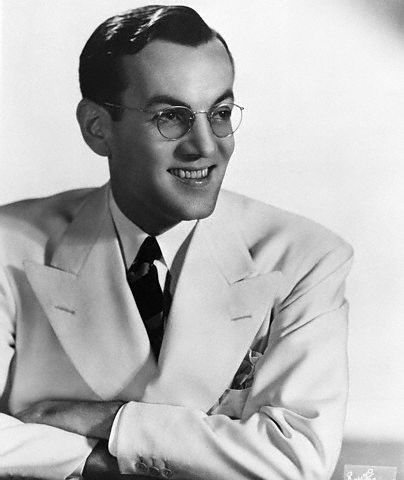Once upon a time (2010 to be exact), in a land far far away, there were these four producers (one played by Leonardo DiCaprio) that decided it would be a good idea to make a darker version of Little Red Riding Hood. It wasn't a good movie in terms of content, but it sure as hell made them rich. In fact, they made more than double their original budget. Soon others figured, why not make other fairy tales into a grittier story? If they could get such success, why couldn't they? And thus, we have begun our adventure into 2013, where gritty fairy tales seem to be popping up a little more. They were going to pop up in 2012, but due to some studio problems, we're now faced to gulping them down in a new year that's supposed to bring us hope that perhaps Hollywood isn't so tapped out of ideas. Then again, let's not be so cynical, as it is a small amount of films that seem to follow this trend. Still, let's delve a little more into this sudden concept of making these more "twisted" takes on classic stories (that oddly were kind of twisted on their own).
Based on what I can gather so far, we have about 4 gritty fairy tale movies (Red Riding Hood, Snow White and The Huntsman, Hansel and Gretel: Witch Hunters, Jack The Giant Slayer) that have come about the start of this decade. Perhaps a few more, if we really want to dig deeper (honestly, I was going to say 5, but it's debatable to say if The Wizard of Oz is a fairy tale). Now, usually something that trends can't simply be counted on with your two hands, let alone one. They happen to a more exaggerated scale that ends up suffocating you with its ridiculousness. Perhaps it is quick to say that we're jumping on to the idea that this is becoming a fad. On the other hand, Hollywood has seemed to make a great deal of unorthodox concepts play themselves straight, such as making Abraham Lincoln a vampire hunter. Even though it's evident that this leaves the general consensus mixed to negative on the films, it sells. If it sells, they'll keep it going, no matter how awful it is. That's just how the business world works.
I suppose it doesn't become too much of a surprise that they would now decide to use fairy tales as the vehicle of this trend, since it is common for Hollywood to recycle concepts and package them in a new light. That doesn't necessarily mean it's a bad thing, a lot of the greatest works out there rely on reusing old concepts and adding on to them. Plus, fairy tales can strike a cord with the audience because they're familiar with how these tales went when they were a kid. Seeing them as an adult in a more mature light serves not only to bring them back to the past but also shed light on a theme that can impact them stronger due to them being older, wiser and more experienced. Not only that, but when one looks back at the actual stories that Disney had toned down for them when they were a child, they see that there was much less dancing and singing that took place. If anything, this darkening of the stories can serve to show the audience that they're ready to face a serious take on the tale. The only issue? That's not what's happening.
When I say that these films are gritty, they're not "brooding, cynical, depressing, disturbing" gritty, they're "dark colors, deep voice, strange imagery, maybe-action-like" gritty. That's not to say that the former and the latter are two completely different entities, there's a great deal of works out there can be both, and pull it off well. The graphic novel Watchmen, for example, manages to use the latter to accentuate the themes that revolve around the former. These movies aren't Watchmen though, they're not even close to it, they're more safe in their approach. Yes, you see these dainty, innocent characters become stone-cold killers or brave adventurers or passionate romantics, but the films don't seem to succeed in pulling that off well. One could easily blame this on performers phoning in the performance and portraying them as if all they're expecting out of this is a paycheck, but then what can be said about those who do put forth the effort and come out looking out of place? The only other aspect you could blame is the way it's presented in terms of it's aesthetics and writing for not being able to take proper advantage of the concept.
That, to me, is the biggest problem that faces these films, based on what I've seen so far. It looks edgier, but if you took away that it was a re-imagining of a fairy tale, it might as well be another mediocre fantasy epic that's trying too hard to be epic. You can see in the way that they cut everything fast, rev up the mysterious element that's vaguely there and toning the light down so it feels as though it's going to be intense. Simply giving something a coat of black paint and splattering blood all over the place doesn't immediately cause someone to feel as though what they're watching is more intriguing and risky. Not even raising the stakes to great levels can do that, because it has no substance to it. One could implement any device into a story and give the illusion that it's more that what it appears to be, but if there's no rhyme or reason it, it's basically a waste. The films don't serve to do more with the idea other than make it appear as though it's this cool, new, hip stuff that all the young kids are looking forward to. That, in the end, feels as though it's insulting the younger demographic by fooling them into thinking this is something cooler and it insults the older demographic because they see how absurd it is. There are only three ways I see this upcoming "genre" becoming something wonderful. They either focus on the darker elements of the tale (or attempt to properly add a darker tint to it), not take themselves too seriously and deliver on a better fantasy epic or make it into a dark comedy.
Like I mentioned before, some of the stories that we've heard of before are much less kid-friendly than what we have been given. The Little Mermaid doesn't end with her getting the prince and living happily ever after. It ends on her refusing to kill the prince (who ended up marrying the Sea Witch) to become a mermaid again, throwing herself to the sea, which in turn causes her to turn into foam. Add in that the potion not only made her mute, but also made her feel that every step she made was as if she was getting stabbed with sharp swords and that the prince loved seeing her dance, and you get something that's far too intense and brutal for a little kid to comprehend it's horrible magnitude, let alone read. If one were to make a more mature rendition of this tale, they would take closer note of the harsher aspects of it and be willing to sew them into the narrative properly. Now if the original fairy tale isn't that somber such as Rapunzel, then they shouldn't alter too much other than the tone. That will affect the characters, the setting, some of the progression of the story and perhaps the theme itself, but it should not alter it to a drastic degree. Rather it should stay somewhat rooted to how the story usually moves but let it move with a more desensitized and distorted fashion that usual. That allows not only for the familiarity of the story to be taken into account, but can also leave the viewer interested in how one could view it in a jaded, bitter tone.
That's easier said than done since you can't just snap your fingers and magically make sugar-plums and pixies look like something that come from the lowest levels of Hell. That requires more attention to detail, precision and careful construction. It's not impossible though, but I imagine that's not what they're looking to achieve. They want more of a grand journey sort of romp. In which case, what I recommend is simply...don't take yourself so seriously. It is well-known that no matter how bizarre a concept is, one must play it off to some level of seriousness to give credibility to the world or to become more engrossed in the film. At the same time, if someone wears a giant foam cheese hat on their head and does nothing more than pout, it will either come across as annoying or incredibly silly. One must find a certain balance of knowing how far they can take themselves seriously with the role. They also need to acknowledge the absurdity of the situation, not necessarily by winking to the audience and saying "Yeah, I know it's weird that I want to fuck a wolfman, but you know what they say about guys with furry feet", but by attempting to play on the ridiculousness from time to time and enjoying themselves. In turn, this makes the audience feel as though that even though what they're watching is ludicrous, they're willing to take it in stride and enjoy themselves.
Finally, we have the idea of just making it into a dark comedy. This is perhaps a very effective way of darkening a fairy tale because it not only allows for someone to take in the both types of gritty I mentioned before and use them both to their advantage but also creates a good semblance of what sort of tone a recreation of this sort needs. Although it's not necessarily hilarious nor conventional in its approach (hell, I'm not sure if that's what the author intended), an example that comes to me as a good way to explain how this should be pulled off is the Alice is Dead series. For those of you who don't know, it's a flash game series that turns the well-known characters from Wonderland into mercenaries. At first, it sounds very idiotic, but it's aware that it's not something that one can just simply take seriously, so it makes a lot of references to how the characters are in the story whilst also filling it in with a disturbing tone. The comedy doesn't come so much from how the characters act (well, not intentionally), but rather of the setting and how the characters come to be what they are. It manages to be serious not so much because of the mercenary aspect but rather due to it's odd approach of the tale while also weaving in this world of fantasy that we're familiar with with the world of the mercenary that we're also aware of. The two end up playing off each other as the bits of humor bring you back to a comfort zone that is then slapped away when the grimness settles in. At the end, you find yourself laughing at it slightly, but you also feel weird about laughing about it and seek to look into it more. Whilst one can play a more "make this disturbing scenario more silly" form of dark comedy, giving it a warped, surrealistic tint to the humor allows for that laughter to get them thinking about the gravity of what it occurring, making them more engaged.
It's still hard to say where this movement is going to keep marching through and whether or not it will lead anywhere good. From what I tell from the two latest ones, I'm still very mixed on the matter. Mainly because both present the two possibilities of how the concept could turn out awful. Hansel and Gretel: Witch Hunters feels like it would fair much better if it wasn't attached with the story of Hansel and Gretel. The designs of the witches look phenomenal and the weapons have a certain badass feel to them based on their look, but they feel somewhat unfitting. This is simply due to the association of the story. We know that the basic elements of the tale are intertwined into another tale, but it doesn't mesh right. It comes off as incredibly laughable to turn these two kids who happened to let their sweet tooth get the better of them suddenly decide to go hunting witches. Not only that but the look is unsure if it wants to capture a fairy tale feel or a epic fantasy-adventure feel, so it's caught up in this unpleasant limbo.
Jack The Giant Slayer, on the other hand, isn't actually based on the Jack we usually think of. While the original tale that this film is based on is more complex than some kid who finds a bunch of beans and then climbs a beanstalk to steal from a giant, it decided that it should implement themes from it. My guess is that's it's trying to get the public to relate to it more clearly, but it comes off forced and it acts as a detriment to the whole film by stooping it to a lower level that what it wants to achieve. Excluding the fact that it shoehorns the more relatable Jack fairy tale into its story, the other problem arises in how it tries to be like other grand fantasy films. This might be more to it's advertising, but it feels like they had a checklist and they were making sure that it could properly hit those sweet spots as cliched as possible. Booming voice over? Check. Overview of landscapes as the hero traverses through them? Check. Slight comedy relief? Check. Badass retort? What do you think? Rather than become something more unique (which is what it should be), it clings to the old methods and takes the skin of better movies in the hopes that it may become what that skin represents instead of a disgusting mess. Both advertise themselves as these fantastic adventures, but all I see is a laughable time-waster. Trust me when I say that there are too many of those kinds of films these days.
In the end, if this does become a trend and more movies of this caliber do start to clog up cinemas everywhere, it would be nice to see if they could tap into its greater potential. A wise man once said that there aren't bad ideas when it comes to stories. There are only bad ways of conveying them. Even though their premises are ridiculous, with the right hands, someone could make it into a spectacular experience. By researching more into the original story, they could play up with references to it or give a more faithful rendition of it that amplifies its more macabre tones. It could also accept it's stupidity and make sure that it does enough to deliver this absurd adventure in a way that it is as insane as it it fun. Hell, if it goes that dark comedy route, it may end up as not only a good way to bring forth more avant-garde films into the scene but also provide a somewhat clever and thought-provoking experience. I don't want this to just become another quick-buck fad, nor do I want it to be just a series of misled half-assed projects. Rather, I'd like to see this bring forth tales that will live on as long as the stories they're based off on. That way, the audience can have a happily ever after instead of a "I'm going to write a long, detailed rant damning this film forever" after.



























